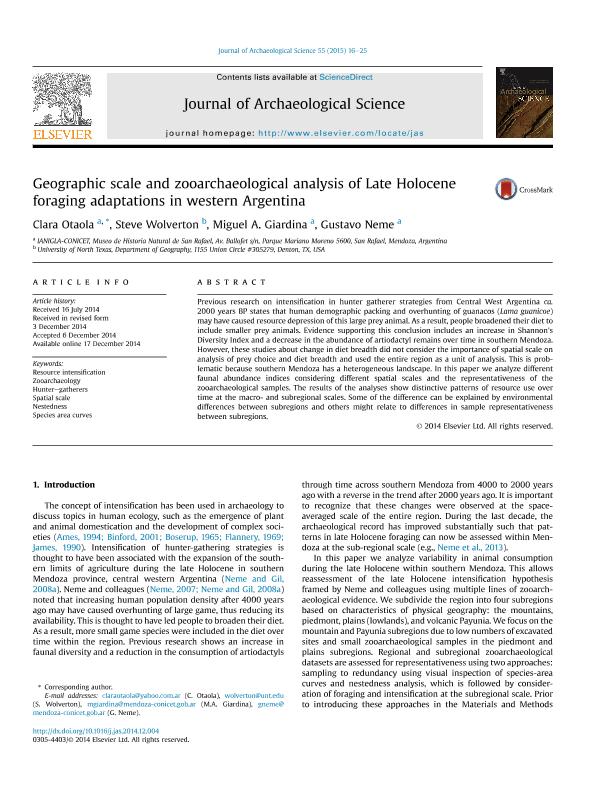Artículo
Geographic scale and zooarchaeological analysis of Late Holocene foraging adaptations in western Argentina
Fecha de publicación:
03/2015
Editorial:
Elsevier
Revista:
Journal of Archaeological Science
ISSN:
0305-4403
Idioma:
Inglés
Tipo de recurso:
Artículo publicado
Clasificación temática:
Resumen
Previous research on intensification in hunter gatherer strategies from Central West Argentina ca. 2000yearsBP states that human demographic packing and overhunting of guanacos (Lama guanicoe) may have caused resource depression of this large prey animal. As a result, people broadened their diet to include smaller prey animals. Evidence supporting this conclusion includes an increase in Shannon's Diversity Index and a decrease in the abundance of artiodactyl remains over time in southern Mendoza. However, these studies about change in diet breadth did not consider the importance of spatial scale on analysis of prey choice and diet breadth and used the entire region as a unit of analysis. This is problematic because southern Mendoza has a heterogeneous landscape. In this paper we analyze different faunal abundance indices considering different spatial scales and the representativeness of the zooarchaeological samples. The results of the analyses show distinctive patterns of resource use over time at the macro- and subregional scales. Some of the difference can be explained by environmental differences between subregions and others might relate to differences in sample representativeness between subregions.
Archivos asociados
Licencia
Identificadores
Colecciones
Articulos(CCT - MENDOZA)
Articulos de CTRO.CIENTIFICO TECNOL.CONICET - MENDOZA
Articulos de CTRO.CIENTIFICO TECNOL.CONICET - MENDOZA
Citación
Otaola, Clara; Wolverton, Steve; Giardina, Miguel Angel; Neme, Gustavo Adolfo; Geographic scale and zooarchaeological analysis of Late Holocene foraging adaptations in western Argentina; Elsevier; Journal of Archaeological Science; 55; 3-2015; 16-25
Compartir
Altmétricas




